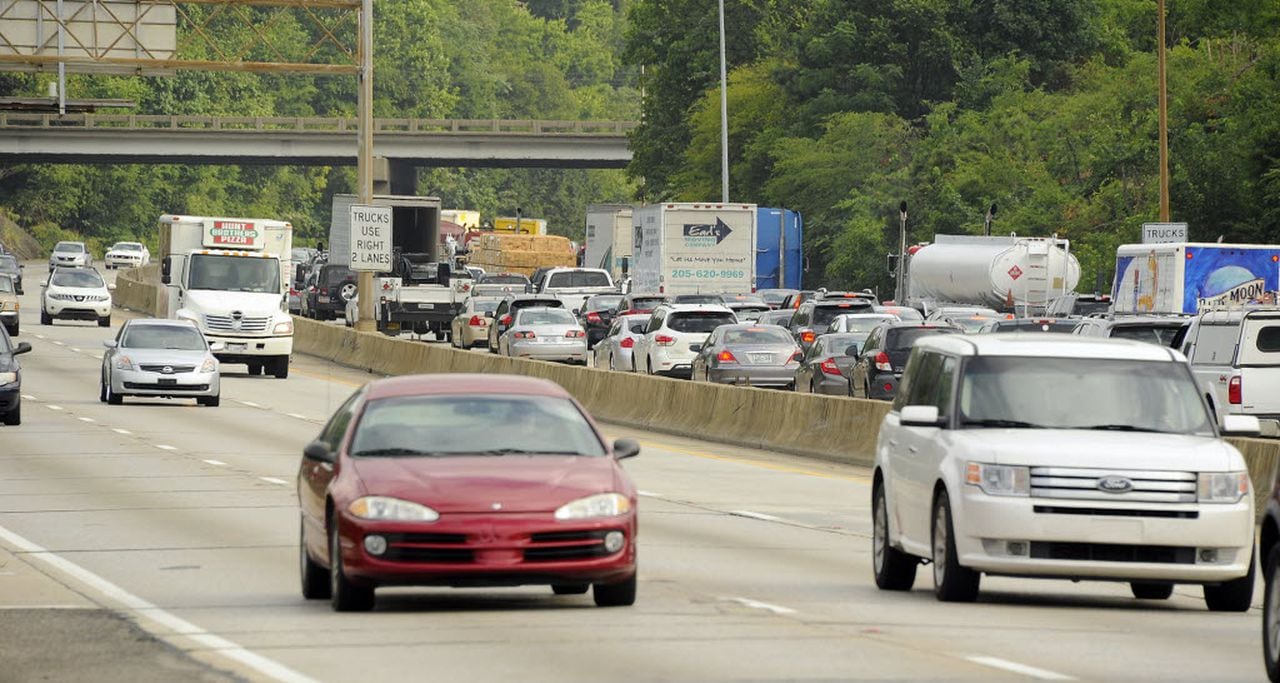Why Alabama got a yellow light on road safety from advocacy group
Alabama has a long way to go if it wants its drivers to be safe on the road, an auto safety advocacy group claimed in a report released Tuesday.
The 2024 Roadmap to Safety, an annual report from the Advocates for Highway and Auto Safety (AHAS), gives Alabama a yellow rating for “caution,” indicating that improvement in legislation surrounding automobile safety is necessary.
The ratings — green, yellow and red — distinguish the number of “optimal lifesaving laws” that the state has in place. Alabama has six of the 16 laws, and only six states and Washington, D.C. received a green rating.
“Alabama fell into the middle category,” said Tara Gill, a senior director for the AHAS. “You guys have done some good things and adopted some good laws, but there’s definitely more work to be done and more opportunity to make your roads safer.”
According to the report, Alabama has had 9,343 traffic fatalities in the last 10 years and 989 in 2022. The advocacy group says that has cost the state over $6.4 billion through factors like lost workplace and household productivity, property damage and medical costs.
Alabama scores well when it comes to laws combatting impaired driving and permitting automated speed enforcement (such as red light cameras), but it fails child passenger safety, graduated driver license programs and distracted driving.
The 16 laws that AHAS considers necessary for achieving success in road safety legislation fall into six categories. They are as follows, with Alabama’s scores beside them on how many laws the state has enacted in those categories:
- Occupant Protection — 2 of 3
- Child Passenger Safety — 0 of 3
- Graduated Driver License Programs — 0 of 4
- Impaired Driving — 2 of 2
- Distracted Driving — 0 of 2
- Automated Enforcement to Curb Speed — 2 of 2
The theme of this year’s report is “Activate Existing Life-Saving Solutions,” encouraging states to enhance legislation that has proven results in decreasing fatal accidents.
The report doesn’t give credit to any laws that are considered “secondary enforcement,” meaning that a “primary enforcement” law needs to be broken first before law enforcement officials can pull over cars and issue citations for the secondary offenses. For example, Alabama has a secondary enforcement rear seat belt law, which has a provision that drivers can’t be pulled over if a back-seat passenger isn’t wearing a seat belt. But if they’re pulled over for speeding and the officer notices it, they can be issued a citation.
“They have been found to be weak and unenforceable,” Gill said. “Secondary enforcement laws insert some uncertainty into laws. Are they going to be enforced or not? It makes it harder for police to enforce them.”
A vital area of improvement for Alabama, Gill said, is to upgrade its graduated drivers program.
To meet the qualifications of the AHAS roadmap, graduated driver license programs need to require drivers to be 16 before they can get a learner’s permit and 17 to get a full license to drive. They also say young drivers should have to get 70 hours of supervised driving experience and shouldn’t be allowed to drive unsupervised after 8 p.m. or have non-family teen passengers without adult supervision.
Alabama has a graduated driver license program, but it doesn’t meet the standards of the AHAS. Learner’s permits go to 15 year olds, 50 hours of behind-the-wheel practice are required and the driving restriction lasts from midnight to 6 a.m. with several exceptions.
“These programs are so essential to teaching novice drivers how to drive safely in lower-risk settings,” she said. “It also instills a lifetime of safe driving behavior.”
Gill emphasized that the AHAS solutions are proven to decrease traffic fatalities, and states “just need to get them over the finish line.”
“With traffic fatalities at historic highs, there is no time to wait,” she said. “We’ve got to get going.”
